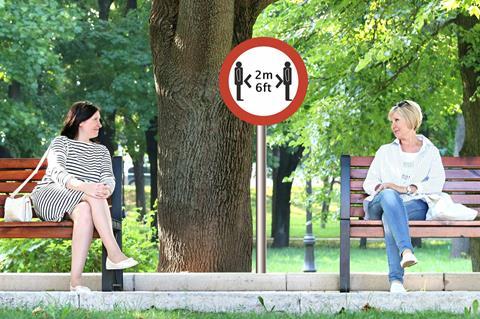Did social distancing really help control the spread of COVID-19? New research by a University of Virginia biologist could shed light on just how important this simple but understudied strategy for avoiding disease might be.

Recently the National Science Foundation awarded assistant professor Amanda Gibson with a $1.5 million CAREER grant to support her research on a similar phenomenon: how organisms evolve to avoid parasites. The five-year grant, one of the NSF’s most prestigious awards for early-career faculty who are rising stars in both the lab and the classroom, will allow Gibson to explore how host populations move and disperse to avoid disease and how that affects their health and evolution. The grant will also play an important role in Gibson’s efforts to help community college transfer students transition more effectively to a four-year degree program.
READ MORE: Wild nematode worms learn to avoid harmful bacteria—and their offspring inherit this knowledge
READ MORE: Curious calves drive shedding of pathogen in herds
“In the real world, parasites and pathogens aren’t everywhere — they’re patchily distributed,” Gibson explained. “A host’s best defense might not be fighting off an infection but simply picking up and leaving an area where the risk of infection is high.”
Her research challenges the traditional focus on the immune system as the best way for organisms to defend against disease. Some organisms may instead defend themselves by physically leaving high-risk areas, yet this concept has received little research attention compared to more well-known defense strategies.
Microscopic worm
Gibson’s work will focus on the nematode Caenorhabditis elegans, a microscopic worm that can be reared and studied in the lab. Unlike migratory birds or monarch butterflies, which are difficult to track in the wild, C. elegans is a more practical subject for researchers interested in observing how organisms react to parasites both in the lab and in the wild. Through a combination of experimental tests, field studies and evolutionary analysis, Gibson and her team will examine whether parasites change movement patterns, whether dispersal helps organisms escape infection, and whether organisms that rely on movement for defense require fewer alternative immune defenses.
“If organisms can simply avoid infected areas, does that reduce the value of other costly defense strategies?” Gibson said. “This grant will help us determine whether movement itself is a key part of how host populations evolve to protect against disease.”
Avoiding pathogens
Beyond its focus on evolutionary biology, the project highlights a broader lesson about disease management. The COVID-19 pandemic demonstrated that avoiding pathogens — through social distancing and quarantine — was one of the most effective ways to limit infection before medical interventions became available. Gibson sees parallels in her research, noting that avoidance strategies may be just as fundamental in nature as they are in public health.
“We tend to think of the immune system as the primary way to fight infection,” she said. “But during COVID, avoidance — limiting contact with infected individuals — was our most effective tool before vaccines became available. Avoidance strategies are widespread in nature, yet they remain understudied.”







No comments yet